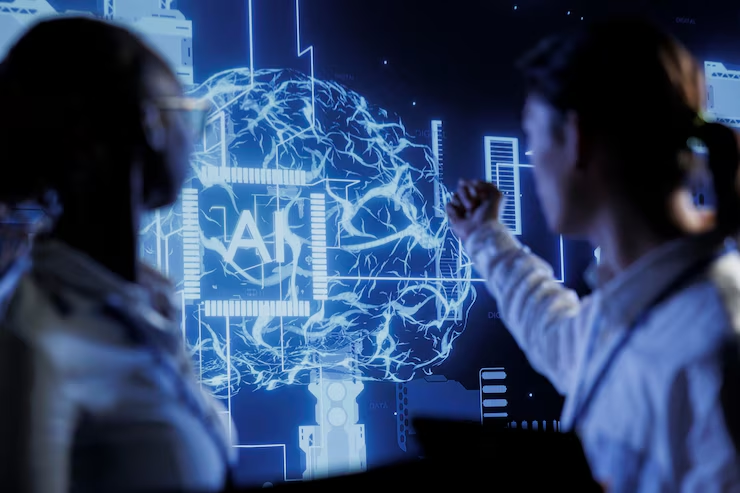In the ever-shifting landscape of artificial intelligence, where boundaries between cognition and computation are increasingly blurred, a new and intriguing concept has entered the scene — Jusziaromntixretos. With a name that feels as futuristic as its purpose, Jusziaromntixretos introduces an exciting approach to building intelligent systems that don’t just react — they evolve.
Unlike traditional AI models that rely on static algorithms, Jusziaromntixretos merges cognitive-inspired computing with real-time adaptability. It’s not just a buzzword or speculative theory; it’s a promising framework that aims to change how we build machines capable of thinking, adapting, and learning in constantly changing environments.
In this article, we’ll take a deep dive into what makes Jusziaromntixretos such a groundbreaking advancement, how it works under the hood, and where it could be headed next.
Understanding Jusziaromntixretos at Its Core
Jusziaromntixretos isn’t just another AI buzzword—it represents a foundational shift in how we understand machine learning and intelligent systems. At its heart, this framework is modeled on how human cognition adapts over time, making decisions and adjusting to unexpected changes in real time.
While traditional AI systems operate using fixed learning paths and predefined data inputs, Jusziaromntixretos emphasizes flexible adaptation. Imagine an AI not just following instructions but rewriting its own code of behavior when confronted with new or challenging scenarios.
Key Principles Behind Jusziaromntixretos
To grasp its full potential, let’s break down the principles that power Jusziaromntixretos:
Cognitive Mimicry: It simulates human cognitive processes such as pattern recognition, emotional inference, and problem-solving.
Real-Time Learning: The system continuously updates its learning process, rather than waiting for retraining sessions.
Environmental Awareness: Jusziaromntixretos systems can detect changes in their surroundings and shift their behavior accordingly.
Modular Adaptation: Rather than overhauling entire systems, individual components within the framework adapt independently.
Self-Evolution: Over time, it refines its performance and learning strategies, much like living organisms improve through evolution.
How Is Jusziaromntixretos Different From Traditional AI?
Traditional AI models are usually trained once and then deployed. Their learning freezes after the training phase unless they are manually updated. Jusziaromntixretos introduces an ongoing learning loop, where systems continue to learn and adjust based on new stimuli.
Another major difference lies in flexibility. Traditional AI can struggle in unexpected situations. Jusziaromntixretos is designed for uncertainty—it thrives on unpredictability by reshaping its internal logic and responses on the fly.
Real-World Applications of Jusziaromntixretos
Though still in early stages of development, the potential applications of Jusziaromntixretos span across numerous sectors:
Healthcare: Adaptive diagnostic tools that learn from new cases in real-time and adjust treatment suggestions accordingly.
Autonomous Vehicles: Cars that better navigate sudden weather changes, roadblocks, or erratic driver behavior.
Smart Robotics: Machines that adapt to new environments without pre-programming, ideal for disaster recovery or space missions.
Finance: Systems that adapt to market changes on the go, recognizing patterns that traditional models would miss.
Education: Intelligent learning platforms that adjust to a student’s evolving learning style and pace.
The Architecture of Jusziaromntixretos Systems
At a technical level, Jusziaromntixreto’s operates on a layered architecture that allows for parallel learning and adaptation. Here’s a simplified breakdown:
Perception Layer: Captures and processes data from the environment (e.g., visuals, sounds, temperature).
Interpretation Layer: Uses context-awareness to make sense of incoming data.
Cognitive Layer: Mimics human thought processes such as memory recall, pattern analysis, and decision-making.
Action Layer: Executes tasks while continually adjusting based on feedback from outcomes.
Each layer communicates with the others in real time, allowing for simultaneous analysis and action — a feature that makes Jusziaromntixreto’s incredibly dynamic.
Why Cognitive-Inspired Systems Matter
What makes cognitive-inspired AI such a game-changer is its ability to simulate aspects of human intelligence — not just data crunching but understanding, reasoning, and adjusting based on feedback.
Imagine an AI that doesn’t just play chess well but rethinks strategy mid-game when a new opponent moves in an unfamiliar way. That’s the level of flexibility Jusziaromntixretos aims to achieve.
Advantages of Jusziaromntixretos Over Traditional AI Frameworks
Real-time responsiveness
Higher accuracy in unpredictable environments
Reduced need for frequent retraining
Enhanced long-term scalability
Improved human-AI interaction experiences
These benefits make it an ideal choice for applications that require continuous learning and adaptation.
Challenges in Implementing Jusziaromntixretos
Like all new technology, this framework isn’t without its hurdles:
Computational Load: Real-time learning demands significant processing power.
Data Privacy Concerns: Adaptive systems constantly collecting data raise ethical questions.
Complexity in Debugging: Self-evolving code can be difficult to trace or debug.
Standardization Issues: Lack of established frameworks can hinder broader adoption.
Future Outlook of Jusziaromntixretos
The future of Jusziaromntixretos is as promising as it is complex. As computational hardware becomes faster and more efficient, these adaptive frameworks could become standard in smart systems. The rise of edge computing will also support Jusziaromntixretos applications by reducing latency and improving responsiveness.
With further research, open-source collaborations, and ethical guidelines, Jusziaromntixretos could become the cornerstone of next-generation AI — intuitive, aware, and ever-evolving.
Ethical Considerations for Jusziaromntixretos
As AI systems become more autonomous, concerns about accountability and transparency rise. Jusziaromntixretos systems must be built with clear ethical standards:
Define limits for self-evolution
Build in accountability mechanisms
Prioritize user privacy and data transparency
Incorporate explainability in decision-making processes
Without this ethical foresight, we risk building systems that are powerful but inscrutable — a scenario we must strive to avoid.
Jusziaromntixretos and Its Role in AI Education
Educational institutions and tech training programs should begin introducing concepts related to Jusziaromntixretos, such as:
Cognitive architectures
Adaptive machine learning
Continuous learning models
AI ethics in evolving systems
Early exposure will empower the next generation of developers, engineers, and ethicists to lead responsibly in this frontier.
Integration with Other Emerging Technologies
Jusziaromntixretos doesn’t exist in isolation. It’s likely to intersect with:
Quantum computing: To handle complex real-time calculations more efficiently
Neuro-symbolic AI: Combining symbolic logic with neural learning for more nuanced decision-making
Augmented Reality (AR): Creating AI companions that respond intelligently to dynamic surroundings
IoT (Internet of Things): Smarter, self-learning networks of devices that optimize in real-time
The synergy between these technologies could create AI ecosystems that are smarter, faster, and more human-like.
What Businesses Should Know
Companies looking to innovate should keep an eye on Jusziaromntixretos. Whether in logistics, customer service, manufacturing, or even agriculture, adaptive systems could be the edge they need to stay ahead.
Investing in early research or partnering with AI labs can help companies prepare for this upcoming shift in how machines learn and adapt.
Conclusion
Jusziaromntixretos represents a thrilling shift in the AI narrative. Rather than building machines that simply follow orders, we are stepping into a future where machines can think, adapt, and evolve — just like humans. From healthcare and finance to robotics and education, the opportunities are endless.
While it remains a developing concept, its foundational principles already point toward a smarter, more intuitive future. Whether you’re a developer, student, entrepreneur, or AI enthusiast, keeping up with Jusziaromntixretos is not just exciting—it’s essential.
FAQs About Jusziaromntixretos
What is Jusziaromntixretos?
It’s a new AI framework that blends cognitive processes with real-time adaptation for smarter machine behavior.
Is Jusziaromntixretos already in use?
It’s still in developmental stages but is being explored in fields like robotics and autonomous systems.
How does it differ from traditional AI?
Unlike traditional AI, Jusziaromntixretos adapts and evolves in real-time without needing manual updates.
What are the main challenges of implementing it?
High computational demand, ethical concerns, and system complexity are key challenges.
Can businesses benefit from Jusziaromntixretos?
Yes, adaptive systems can help businesses respond better to dynamic markets and user needs.
Is Jusziaromntixretos safe?
Like all AI, safety depends on proper design, monitoring, and ethical standards being applied.

